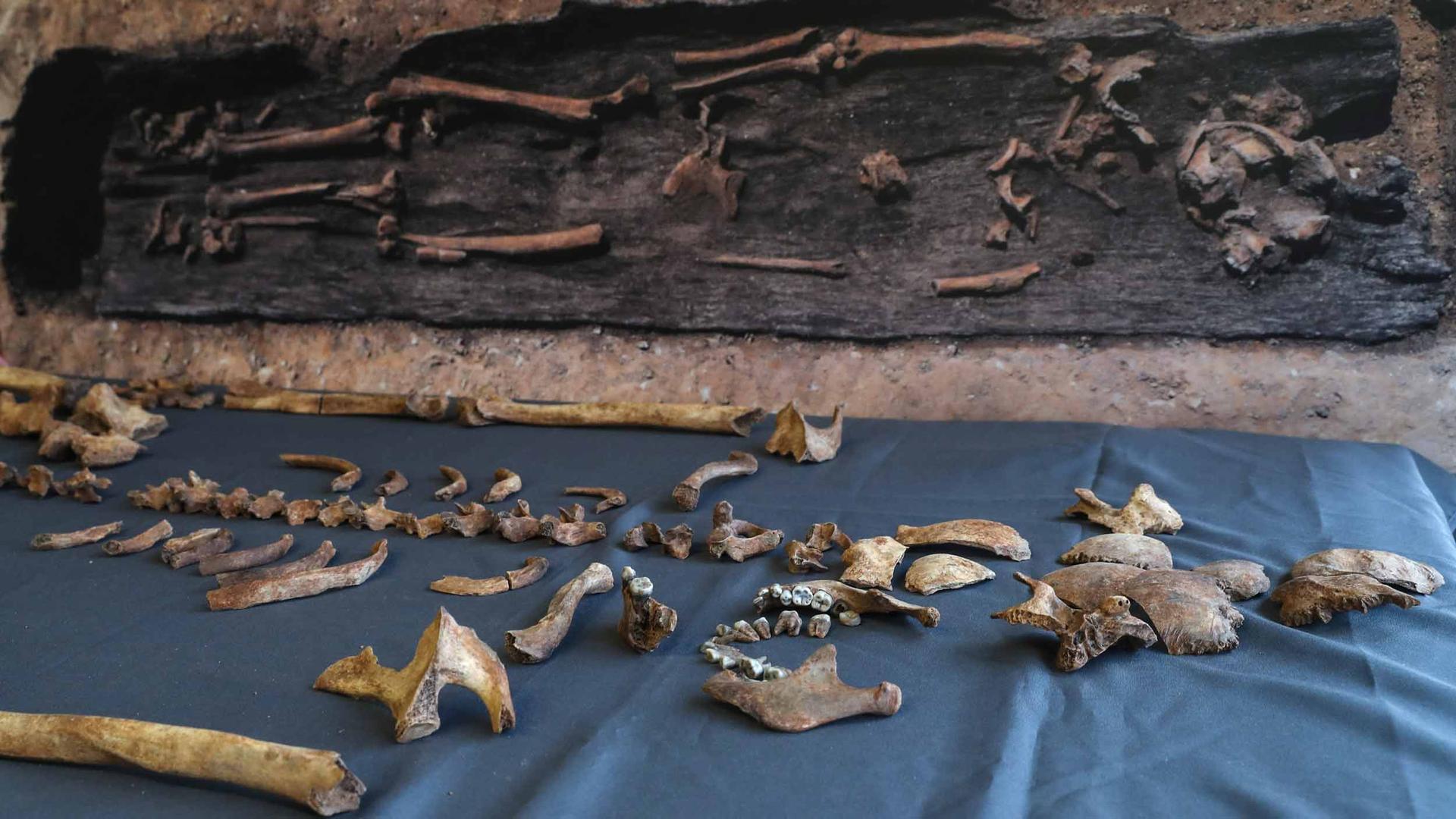Rare gems in skeleton’s teeth challenges thinking about Medieval women
Human skeleton bones discovered in a previously unknown Anglo-Saxon cemetery in Norfolk are seen at the offices of the Museum of London Archaeology in Northampton, central England, on Nov. 16, 2016.
The discovery of semi-precious gems in the teeth of a 1,000-year-old female skeleton proved women were more widely involved in creating medieval manuscripts than previously thought, a group of international historians said on Wednesday.
A study by German-based Max Planck Institute for the Science of Human History and Britain’s University of York found traces of lapis lazuli — which was used as a blue pigment in painting — in the dental plaque of a woman buried between 1000-1200 AD.
The skeleton was unearthed in a cemetery associated with a women’s monastery in Dalheim in western Germany.
The researchers said this challenged long-held beliefs that women had played little role in the European Middle Ages in producing literary and written texts which came largely from religious institutions.
Researcher Christina Warinner from the Max Planck Institute for the Science of Human History said this finding from the 11th century was unprecedented in showing more women were literate, educated and encouraged to read at that time.
“I am excited that our study shows that the use of archaeology might have the tools to recover some of the lost information (about women in the past),” Warinner said by phone. “We have this view there was only a handful of extraordinary women in the past that seemed to be different from everyone else but I think that more were involved than we give credit for.”
The team studying the skeleton concluded that the woman, who was aged 45-60, must have been a painter who frequently licked the end of the brush whilst painting.
Warinner said the woman was thought to be part of a group of about 14 women living at the monastery who were likely to have been wealthy, upper class, and educated.
“Here we have direct evidence of a woman, not just painting, but painting with a very rare and expensive pigment,” she said.
“This woman’s story could have remained hidden forever without the use of these techniques. It makes me wonder how many other artists we might find in medieval cemeteries — if we only look.”
